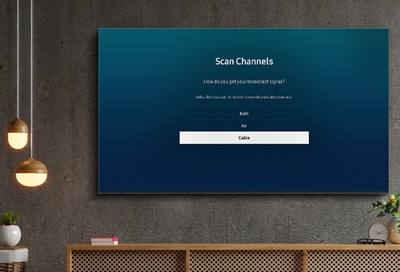Apollo Group Tv Things To Know Before You Get This
Apollo Group Tv Things To Know Before You Get This
Blog Article
The Buzz on Apollo Group Tv
Table of ContentsApollo Group Tv for BeginnersThe Only Guide for Apollo Group TvMore About Apollo Group TvSome Ideas on Apollo Group Tv You Need To Know
In this situation, rather than having three-minute industrial places during a 30-minute tv program, television programs might change to one where a customer will certainly be required to have a regular monthly registration, to ensure that they cen sight targeted banner advertisements. This sort of advertising and marketing currently takes place on the net, and the quantity of data tv firms gather permits them to do similar.Explain the significant trends amongst the broadcasting and cable television networks. Popular radio shows such as cops dramatization Dragnet and western cowboy collection Gunsmoke were adjusted for tv, and new TV shows were sponsored by solitary advertisers, simply as radio programs had been.
Today, the tv sector is much a lot more intricate. Programs are funded by several advertisers; shows is managed by major media conglomerates; and the 3 major networks no much longer control the airwaves but rather share their customers with many cord channels. Several factors account for these fads within the market, including technological developments, government regulations, and the creation of new networks.

Rumored Buzz on Apollo Group Tv
Also public tv has ended up being subject to the impact of advertising. Established in 1969, (PBS) established out of a record by the Carnegie Commission on Educational Television, which checked out the duty of educational, noncommercial tv on culture. The report advised that the government financing public tv in order to supply variety of shows throughout the network eraa service produced "not to market products" but to "improve citizenship and public solution (McCauley, 2003)." Public television was additionally meant to give global accessibility to television for customers in rural locations or audiences that might not manage to pay for exclusive television services.
The duration between 1950 and 1970 is traditionally acknowledged as the. In addition to a little portion of airtime controlled by public tv, the three major networks (understood as the Big Three) controlled the tv sector, collectively representing even more than 95 percent of prime-time watching. In 1986, Rupert Murdoch, the head of international company Information Corp, released the Fox network, testing the supremacy of the Big 3.
Targeting young and minority audiences with shows such as Buffy the Vampire Killer, Moesha, Dawson's Creek, and The Wayans Bros., the new networks wanted to attract terminals away from their old network associations. Rather than repeating the success of Fox, UPN and WB struggled to make an effect. Unable to bring in several associate stations, the two fledgling networks got to fewer families than their bigger competitors because they were impossible in some smaller cities.
This decision led the way for the growth of cord motion picture networks, adding to the rapid growth of cable in the 1980s and 1990s. apollo tv group. Additional deregulation of cable in the 1984 Cable Communications Plan Act got rid of limitations on cord rates, enabling drivers to bill what they wanted for cable television services as long as there worked competition to the solution (a criterion that over 90 percent of all cable markets could meet)
Things about Apollo Group Tv

Having created the initial "superstation," Turner increased his world by founding 24-hour news network CNN in 1980. At the end of the year, 28 nationwide programs solutions were offered, and the wire revolution had begun. Over the next decade, the market undertook a period of fast growth and popularity, and by 1994 customers can select from 94 fundamental and 20 costs cable services.
Figure 9 - https://filesharingtalk.com/members/603104-apollogtv01.16 Boosted competition from cable television networks has triggered a steady decrease in the networks' audience ratings. Throughout the 1950s, the expense of creating a single tv program increased as shows came to be longer and production expenses rose. Sponsorship on network tv shifted from single sponsorship, in which a program was completely sustained and generated by one marketer, to numerous sponsorship, in which advertisers purchased 1- or 2-minute areas on the show
Choose one of the Big Four networks and publish out its once a week programs timetable. Watch the network's prime-time programs over the training course of a week, keeping in mind the target group for each show.
The Ultimate Guide To Apollo Group Tv

Linear TV, typically described as conventional program television, includes wire and satellite television. It's called "linear" since material adheres to a predetermined programs routine, unlike on-demand web content which the individual customer determines to watch based on their own preferences and timetable. So, when you ask, "What is linear TV?", think of it as the traditional method of watching TV that has been around for decades.
Report this page